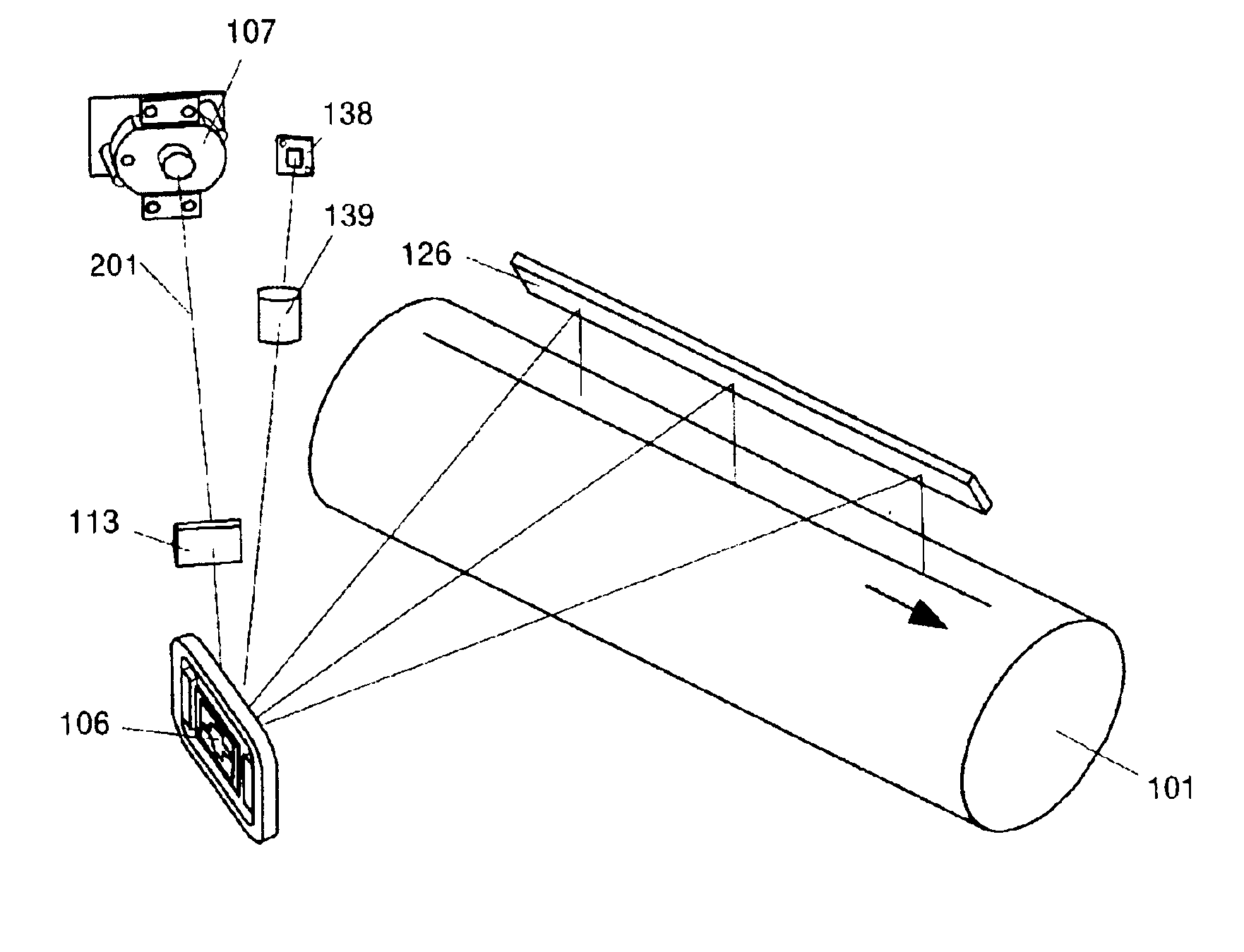Optical scanning device and image forming apparatus
- Summary
- Abstract
- Description
- Claims
- Application Information
AI Technical Summary
Benefits of technology
Problems solved by technology
Method used
Image
Examples
second embodiment
[0123]In the first embodiment explained above, the stepping motor in FIG. 6 is used as a unit of driving the coupling lens in the optical-axis direction. Alternatively, as a light-source unit 700 depicted in FIGS. 16A and 16B, an actuator, such as a voice coil, may be used.
[0124]In FIGS. 16A and 16B, a semiconductor laser 701 as a light source fits in a through hole 703 of a holder member 702 by pressure from a side opposite to a surface that abuts on a housing not shown coaxially with the through hole 703. On the surface side that abuts on the housing of the holder member 702, a cylindrical portion 709 is integrally formed coaxially with the through hole 703. Along an internal circle of the cylindrical portion, an electromagnetic coil 704 wounded in a cylindrical shape is inserted. A reference numeral 706 represents a coupling lens, such as a collimator lens. The coupling lens 706 forms a first image-formation optical system that converts the light beam from the light-emitting sour...
third embodiment
[0129]Next, a third embodiment is explained in which a variable-focus lens as depicted in FIG. 23 is used as a coupling lens to make the beam-spot diameters on the surface of the photosensitive member uniform. A configuration example of a light-source unit using this variable-focus lens as a coupling lens is depicted in FIG. 24.
[0130]This light-source unit includes a light source 21 and a variable-focus lens unit 13. The variable-focus lens unit 13 includes a variable-focus lens 14 and a fixed object lens 15.
[0131]FIG. 23 depicts a detailed drawing of the variable-focus lens unit 13. The variable-focus lens 14 of this variable-focus lens unit 13 has the following configuration so as to have a thin thickness with respect to a focal length of the fixed object lens 15.
[0132]With respect to an annular silicon spacer 24, a thin-film glass diaphragm 25 as a translucent elastic film is jointed through positive-polarity junction. On the glass diaphragm 25, a piezoelectric element 26 made of...
fourth embodiment
[0135]Next, a fourth embodiment is explained by using FIG. 14, in which a depth enlarging unit is used, instead of moving the coupling lens in an optical-axis direction for correction in field curvature, to make the beam-spot diameters uniform on the surface of the photosensitive member.
[0136]The basic configuration of the optical scanning device of FIG. 14 is similar to the configuration of FIG. 1 explained in the first embodiment, but is different therefrom in that a depth enlarging unit 301 is disposed between the light-source unit 107 and the vibration mirror 106. Also, the optical scanning device according to the present embodiment does not include a unit of moving the coupling lens in an optical-axis direction, which is as depicted in FIG. 6 and disposed in the first embodiment.
[0137]The depth enlarging unit 301 is provided with a phase-type optical element that increases a side-lobe peak intensity, for example. With this, a depth margin is enlarged. A large ratio of enlarging...
PUM
 Login to View More
Login to View More Abstract
Description
Claims
Application Information
 Login to View More
Login to View More - R&D
- Intellectual Property
- Life Sciences
- Materials
- Tech Scout
- Unparalleled Data Quality
- Higher Quality Content
- 60% Fewer Hallucinations
Browse by: Latest US Patents, China's latest patents, Technical Efficacy Thesaurus, Application Domain, Technology Topic, Popular Technical Reports.
© 2025 PatSnap. All rights reserved.Legal|Privacy policy|Modern Slavery Act Transparency Statement|Sitemap|About US| Contact US: help@patsnap.com



